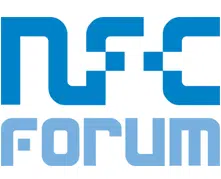The standards body has published an important draft specification that will enable developers to protect NFC tags in smart posters and other applications from being tampered with or replaced with an imposter tag.

The NFC Forum has published the NFC Signature Record Type Definition (RTD) Candidate Specification, designed to enable developers to build anti-tampering checks for NFC tags in the field into their applications.
URI spoofing and redirection, where an authorised NFC tag is replaced with one that points to a resource under a fraudster’s control, was raised as an issue last year by security researcher Collin Mulliner.
The Signature RTD specification is designed to help verify the authenticity and integrity of data stored in an NFC tag. It does that by defining required and optional signature RTD fields to be used in a tag and providing a list of suitable signature algorithms and certificate types that can be used to create a signature.
That means developers can now add a signature to their NFC tags and build a tag authenticity checking process into their applications, MasterCard’s Jonathan Main, chair of the NFC Forum’s Technical Committee, told NFC World.
Using Signature RTD, when an NFC phone reads a tag, it will be able to verify who wrote the data stored on the tag and confirm that the data hasn’t been changed — ensuring that no-one can modify the data held on the tag, or replace it with a fraudulent one, without the application knowing it has been tampered with.
The Forum is keen to point out that “it does not define or mandate a specific Public Key Infrastructure (PKI) or certification system, nor does it define a new algorithm for use with the Signature RTD.” Instead, says Main, the specification gives developers a tool for building their own choice of security system into their applications.
The NFC Forum has also now formally adopted its LLCP Specification, which covers peer-to-peer NFC applications. The Logical Link Control Protocol enables two NFC devices to understand what services the other device has available, activate them and enable multiple applications to make use of the same link simultaneously.
When two NFC devices are brought together to exchange a large quantity of data such as a photo, for instance, LLCP handles the initiation exchange between the devices, enables them to discover which networking functions they both have — such as WiFi or Bluetooth — and then choose the networking solution best suited for the transfer.
In a retail environment, the same specification also enables an NFC phone to be used to both make a payment and receive a voucher from a point-of-sale at the same time, says Main.
Next: Visit the NFCW Expo to find new suppliers and solutions